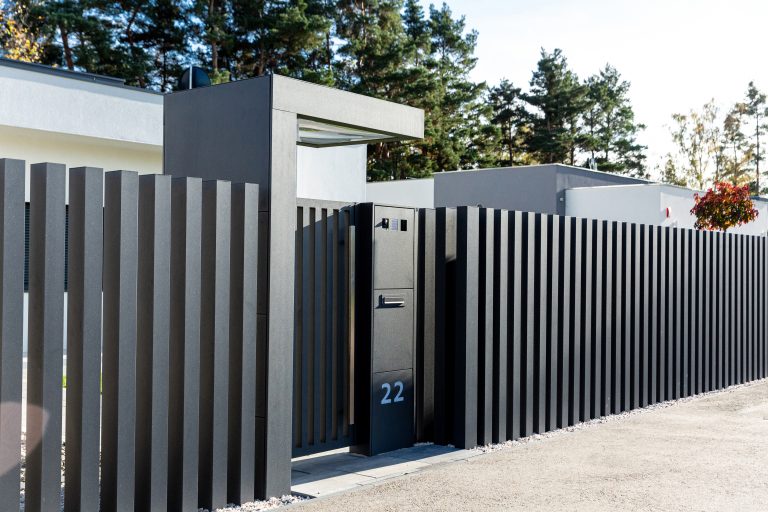Exploring Polish Metal Fencing: A Durable and Stylish Choice for Your Property
Metal fencing has become a common sight in both urban and rural environments across Europe. In Poland, this trend has seen significant growth due to its practicality, strength, and visual appeal. Whether used for private homes, public infrastructure, or commercial properties, Polish metal fencing offers a combination of security and style that suits a wide range of needs.
What Is Polish Metal Fencing?

Polish metal fencing refers to a variety of fences manufactured in Poland using different types of metals such as steel, iron, and aluminum. These fences are often powder-coated for added protection against corrosion and to offer various color finishes. From simple wire mesh to ornate wrought iron panels, Polish manufacturers provide a wide selection that caters to both modern and traditional tastes.
The increasing demand for fencing that not only provides safety but also complements property aesthetics has led to innovation and specialization in Poland’s metalworking industry. Today, Poland is known for exporting metal fences throughout Europe due to the high standards in quality and design.
Why Metal Fencing Matters Today
1. Growing Security Concerns
With rising concerns over property security and privacy, homeowners and businesses are turning to durable fencing options. Metal fences are tough to breach and resistant to weather, making them ideal for long-term use.
2. Aesthetic Value
Modern Polish fences are not only functional but also visually appealing. From laser-cut designs to customizable panels, these fences can enhance the curb appeal of any property.
3. Longevity and Low Maintenance
Compared to wood or vinyl, metal fencing requires minimal upkeep. Coated with rust-resistant layers, these fences can withstand Poland’s seasonal weather changes, including snow, rain, and intense sun.
4. Impact on Property Value
A well-installed metal fence can add value to residential properties by boosting both security and visual charm. It also helps in defining property boundaries and keeping pets or children safe.
5. Who Benefits?
-
Homeowners: for residential security and design enhancement
-
Businesses: to secure assets and establish perimeter control
-
Public Infrastructure: schools, parks, and municipal buildings
-
Agricultural Properties: for livestock control and equipment protection
Recent Trends and Industry Updates (2024–2025)
| Year | Development | Description |
|---|---|---|
| 2024 | Laser-cut Design Popularity | Polish manufacturers saw a surge in demand for custom-cut steel fences, particularly geometric and floral patterns. |
| 2025 | Sustainable Metal Sourcing | Leading brands like Ogrodzenia24 and Joniec have adopted eco-friendly sourcing and recycling policies. |
| Late 2024 | Anti-Corrosive Innovation | New coatings using zinc-aluminum alloys improve resistance to corrosion in coastal and high-humidity regions. |
| 2025 | DIY Fence Kits | Consumer-ready fencing kits have become more available in Polish hardware stores and e-commerce sites, aiding self-installation trends. |
Regulations and Legal Considerations in Poland
When planning to install metal fencing in Poland, it’s important to consider the legal framework. Although it may vary slightly by locality, the following rules generally apply:
1. Height Restrictions
-
Fences up to 2.2 meters do not usually require a building permit.
-
Anything taller may require permission from local authorities (per Prawo budowlane, Building Law Act of 7 July 1994, with amendments).
2. Boundary Agreement
-
If fencing borders another property, Polish law encourages mutual agreement between neighbors to avoid disputes.
3. Historical and Urban Zones
-
Special permits may be needed if the property is located in a heritage area or protected urban zone.
4. Safety Requirements
-
Pointed or sharp-edged fences along public roads may be restricted due to safety regulations.
5. Noise and Environmental Impact
-
In rare cases, fence installations may be reviewed for their environmental or acoustic impact.
Always consult local municipal offices or property management services before beginning an installation to ensure compliance.
Helpful Tools and Resources
To help property owners and builders make informed decisions, several resources are available online and locally in Poland:
| Tool/Resource | Purpose |
|---|---|
| Geoportal.gov.pl | View property boundaries and planning permissions. |
| Kalkulator Ogrodzenia (Fence Calculator) | Online cost estimators for various fence types and materials. |
| Polski Związek Budownictwa (Polish Construction Association) | Offers guidelines and construction law updates. |
| DIY Installation Videos (YouTube, Polish hardware brands) | Guides on how to install prefabricated fencing systems. |
| Architectural Design Templates | Available through design firms and fence manufacturers for visualizing fence layouts. |
Frequently Asked Questions (FAQs)
Q1: What are the most common metals used in Polish fences?
A: Steel and wrought iron are the most commonly used due to their strength and durability. Aluminum is also popular for lightweight, rust-resistant fencing.
Q2: How long does a metal fence typically last?
A: With proper coating and maintenance, metal fences can last 20 to 50 years. Galvanized and powder-coated versions offer the longest life spans.
Q3: Can I install a Polish metal fence myself?
A: Yes, many fences come in modular kits with clear instructions. However, for complex or heavy designs, professional installation is recommended.
Q4: Are metal fences more expensive than wooden ones?
A: Initial costs may be higher for metal fences, but they are more cost-effective in the long run due to minimal maintenance and long life.
Q5: Is a building permit always needed for fencing in Poland?
A: Not always. As per Polish building regulations, fences under 2.2 meters usually do not require a permit. However, checking with local authorities is advised.
Conclusion
Polish metal fencing stands out as a durable, stylish, and long-term solution for securing and beautifying properties. With advancements in design, environmental sustainability, and ease of installation, these fences meet the diverse needs of modern homeowners, public projects, and businesses.
Understanding the regulations, costs, and available resources can help make an informed choice that complies with local law and enhances property value. Whether you’re upgrading an existing perimeter or installing a new fence altogether, Polish metal fencing offers a balance of practicality and elegance that is hard to ignore.